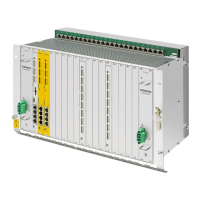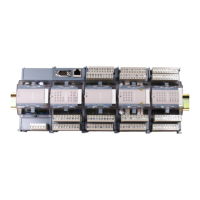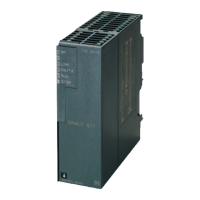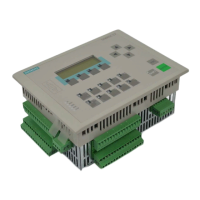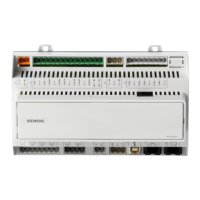TXP-CLC Course
7
CHAT
Sensor chatter can be monitored using the CHAT parameter to define the chatter
monitoring time. The range of acceptable values is from 0 to 100 seconds where
0 disables chatter monitoring. The default setting is 0.
The monitoring function is triggered when more than three changes in signal
follow the first change in signal within the parameterized chatter monitoring time.
When the chatter monitoring time has expired, it is restarted by the next change
in signal. The number of changes in the signal edge within the parameterized
chatter monitoring time is measured with the following considerations:
• During monitoring, the output signal from the chatter monitoring function
follows the input signal
• If the signal chatters, the monitoring time is increased to three times its
defined value, a substitution binary signal is processed further, and a fault
TTD is generated
The effects on the process image are that the ”KG” bit is immediately reset in the
status data block (ZUDB). The effect on time-tagged data is that a fault TTD
”CHAT coming” is generated. In addition, a signal TTD, channel invalid, is
generated if the binary signal of the channel is configured as a TTD. The effects
on further internal processing are that the substitution binary signal (EBS) is
processed further as the sensor signal according to the parameterization. The
new monitoring time is three times the old value.
DELAY
A signal delay can be parameterized using the DELAY parameter. A delay time
between 0 to 10 seconds is permissible. As shown in the diagram below, the
following conditions apply when using signal delay:
The parameterized delay time is restarted with each change in input signal.
If the input signal remains stable during the monitoring time, it is made available
at the output for chatter monitoring.
Signal delay
Binary value in PAED
Signal delay Signal delay Signal delay
Delayed Binary Value in ZUBD
Training Center
Copying of this document, and giving it to others and use or communication of the contents, are forbidden without express authority. Offenders are liable to the payment of
damages. All rights are reserved in the event of the grant of a patent or the registration of a utility model or design.
5

